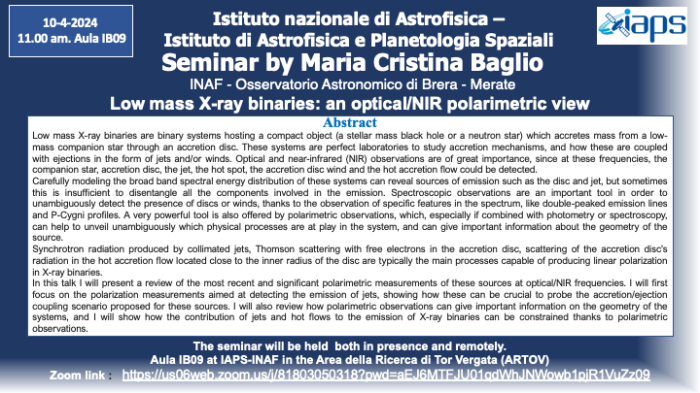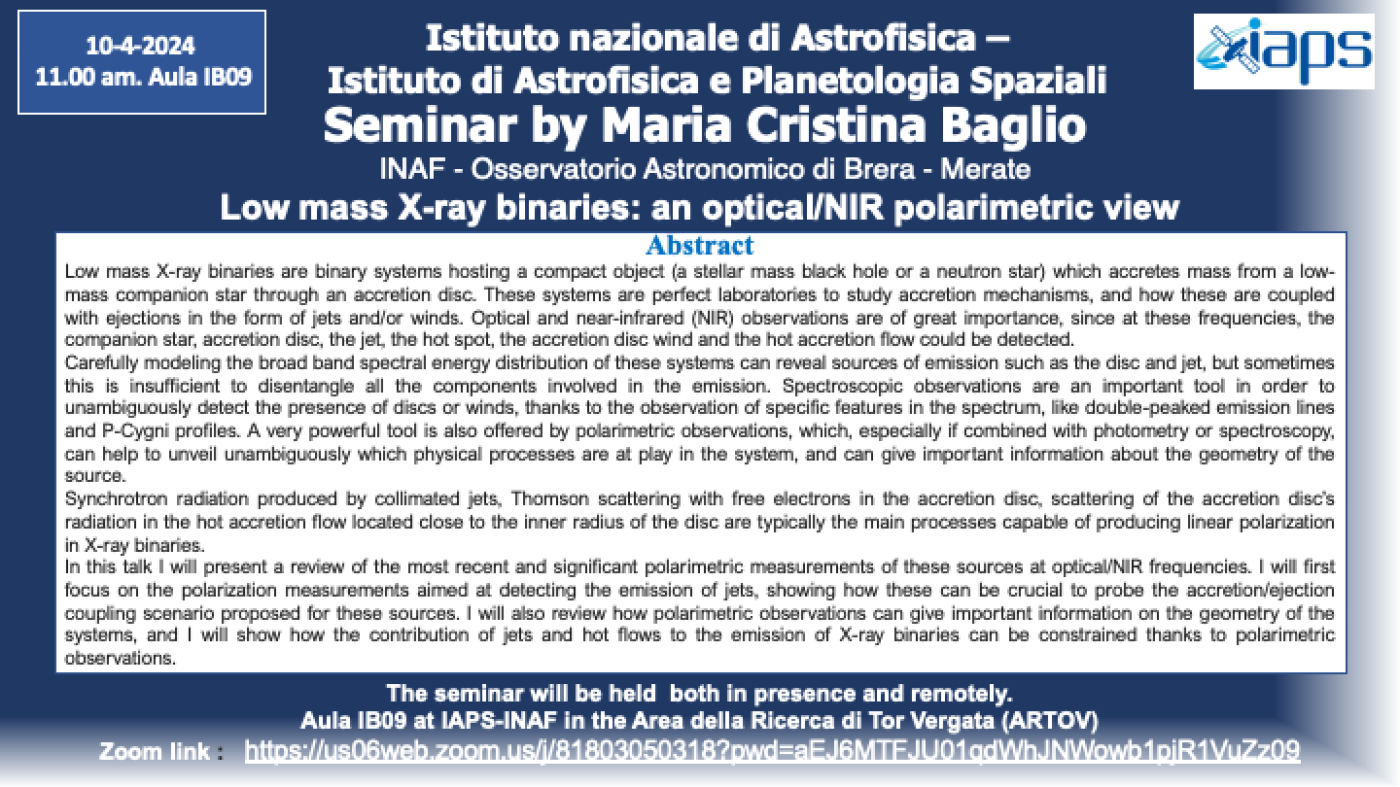Low mass X-ray binaries: an optical/NIR polarimetric view
Affiliation: INAF - Osservatorio Astronomico di Brera - Merate

Abstract: Low mass X-ray binaries are binary systems hosting a compact object (a stellar mass black hole or a neutron star) which accretes mass from a low-mass companion star through an accretion disc. These systems are perfect laboratories to study accretion mechanisms, and how these are coupled with ejections in the form of jets and/or winds. Optical and near-infrared (NIR) observations are of great importance, since at these frequencies, the companion star, accretion disc, the jet, the hot spot, the accretion disc wind and the hot accretion flow could be detected.
Carefully modeling the broad band spectral energy distribution of these systems can reveal sources of emission such as the disc and jet, but sometimes this is insufficient to disentangle all the components involved in the emission. Spectroscopic observations are an important tool in order to unambiguously detect the presence of discs or winds, thanks to the observation of specific features in the spectrum, like double-peaked emission lines and P-Cygni profiles. A very powerful tool is also offered by polarimetric observations, which, especially if combined with photometry or spectroscopy, can help to unveil unambiguously which physical processes are at play in the system, and can give important information about the geometry of the source.
Synchrotron radiation produced by collimated jets, Thomson scattering with free electrons in the accretion disc, scattering of the accretion disc’s radiation in the hot accretion flow located close to the inner radius of the disc are typically the main processes capable of producing linear polarization in X-ray binaries.
In this talk I will present a review of the most recent and significant polarimetric measurements of these sources at optical/NIR frequencies. I will first focus on the polarization measurements aimed at detecting the emission of jets, showing how these can be crucial to probe the accretion/ejection coupling scenario proposed for these sources. I will also review how polarimetric observations can give important information on the geometry of the systems, and I will show how the contribution of jets and hot flows to the emission of X-ray binaries can be constrained thanks to polarimetric observations.


